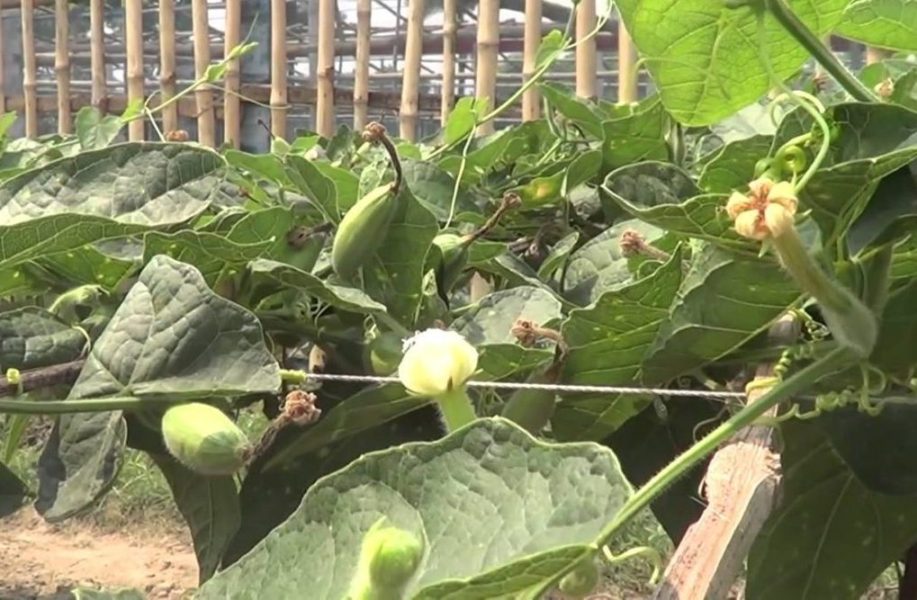General Information
- Category- Vegetable
- Binomial Name- Trichosanthes dioica
- Common Names- Parwal, palwal, parmal
- Spread- 40-60 inches**
- Height- 60-180 inches**
- Average Production- 1-3 kg per plant
- Days to Maturity- 120-140 days**
Nutrition Values
- Calories: 19
- Water: 92%
- Protein: 2 grams
- Carbohydrates: 4 grams
- Sugar: 4.7 grams
- Fiber: 3 grams
- Fat: 0.3 grams
Vitamins
- Vitamin A- 255 IU
- Vitamin C- 29 mg
- Vitamin B1- 0.05 mg
- Vitamin B2- 0.06 mg
Minerals
- Potassium- 83 mg
- Calcium- 30 mg
- Iron- 1.7 mg
- Manganese- 0.41 mg
- Magnesium- 9 mg
- Phosphorous- 40 mg
- Sodium- 2.6 mg
- Copper- 1.1 mg
*The values are standard average per 100 grams and might change a bit.
Environmental Requirements
- Soil- Well-drained sandy loam to clay soil
- Soil Moisture- 25%
- Soil pH- 6.0-6.5
- Sun Requirements- Full Sun
- Best Time to Plant- Early Spring (February)
- Temperature range- 22-35 Celsius
Tips to Grow Pointed Gourd
- Arrange good quality vine or root or a plant.
- The soil should be sandy-loamy, well-draining . It doesn’t grow in heavy or compact soil.
- Planting from Vine Cuttings- Snip off a 1-2 feet vine from atleast 1-2-year-old mature vine. Ensure that the cutting has atleast 8-10 nodes. The leaves from the vine should be defoliated, except 2-3 leaves. Plant the cutting in a small pot or in garden in a mixture of 70% soil and 30% coding manure. Mist it regularly. Transplant the cutting into the garden pit (if you want to plant at a different place) during early spring (February to March).
- Planting from Root Suckers– For root propagation, dig tuberous roots from the soil during early spring. Plant them directly into the soil.
- Mulch the soil with dry leaves, bark, or compost to help it retain moisture and to prevent plants from getting weeds or pests for better growth.
- The gourd is available for harvesting after 3-4 months from the planting. It should be harvested before it gets fully ripened, otherwise, the flesh of the mature gourd will become over ripen, and seeds will become harder, and will not taste best.
- Setup a base for the plant to spread properly for your balcony or open garden. Our guide will help you doing this setup.
** The values are standard values but might change a bit.
Show Comments


